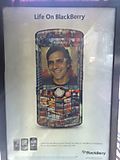It’s good to see Nokia presenting two new Nseries models yesterday. While I leave it to others to report on all the multimedia details, I was intrigued that both devices support several UMTS frequency bands, a first for Nseries devices.
The N85 has the most wide ranging UMTS band support. According to the datasheet, there will be two versions: The first one supports UMTS in the 900/1900/2100 MHz and is thus clearly targeted at Europe and the starting deployments of UMTS in the 900 MHz band in addition to the 2100 MHz band. The 1900 MHz band is at least partly usable in the US, where AT&T has deployed UMTS in some cities. The second version supports 850/1900/2100 and is probably mainly targeted at the US since AT&T uses both frequencies. Too bad it doesn’t support all four bands, it would make a great world band phone that way.
But despite the support of three UMTS bands there are some combinations which don’t work so well: For Australia, both models are needed since Telstra uses the 850 MHz band for 3G and Optus deploys 3G in the 900 and 2100 MHz bands. So should both operators sell the phone in the future they will each sell a different version.
Some people in Europe might actaully prefer the US version of the phone as there are only few places where 3G is deployed in the 900 MHz band yet and they might thus benefit more from the 850 MHz band when roaming in the US (e.g. with an AT&T prepaid card for Internet access). Bizare… Also interesting is that T-Mobile US won’t be able to sell the phone since it doesn’t support the AWS 1700/2100 MHz band.
The N79 seems to support 900/2100 MHz for now, so clearly targeted at Euope and potentially Optus in Australia. I wouldn’t be surprised though to see a 850/2100 MHz version soon.
Well done, Nokia, it was really time to add multi band 3G suport to Nseries, especially for roamers like me!


